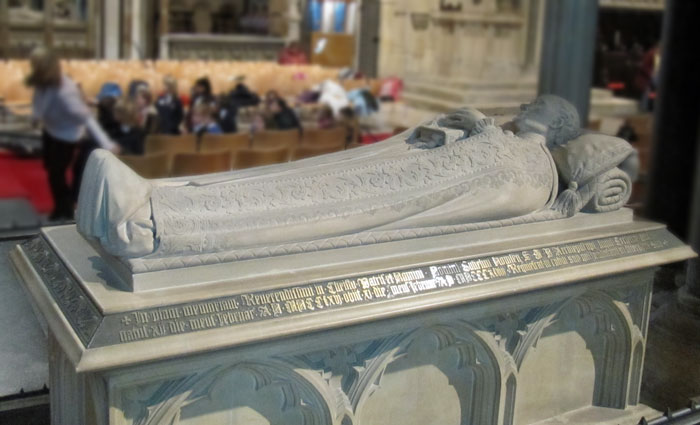
(1766-1848) Archbishop of Canterbury (1828-1848) for more click here
Designed by George Austin Senior or his son Harry George Austin. They were successively architects and surveyors of the Cathedral. Stone effigy by Richard Westmacott the Younger.
A Victorian archbishop during a period of social reform he crowned the young Victoria and married her to Prince Albert. He died at Lambeth Palace after a long illness and his funeral witnessed a long procession from Lambeth to the Church of St Mary the Blessed Virgin in Addington, South London, where Howley was laid to rest in the chancel. The monument in the cathedral is therefore strictly a cenotaph. The Archbishops of Canterbury resided throughout the nineteenth century, in the nearby Georgian mansion known as Addington Palace.
This tomb hearkens back to its medieval precursors in more ways than one. It was the first monument to an Archbishop of Canterbury to be erected in the cathedral choir since the Reformation. The tomb and canopy are both carved from the same stone and present a uniform weathered appearance. It is unfortunately not possible to see sufficient ‘natural stone’ from the wrong side of the railings. The colour match does not appear correct for Caen Stone (note the flanking columns) and is more in keeping with a stone from the Jurassic limestone belt such as Bath Stone. The tomb chest is faced with a blank arcade of gothic arches and a brass inscription encircles the cornice. And an effigy lies recumbent upon the tomb, the horizontal disposition of which belies the archbishop’s less than five-foot stature. The canopy is expertly carved with a rich array of decorative foliage.
